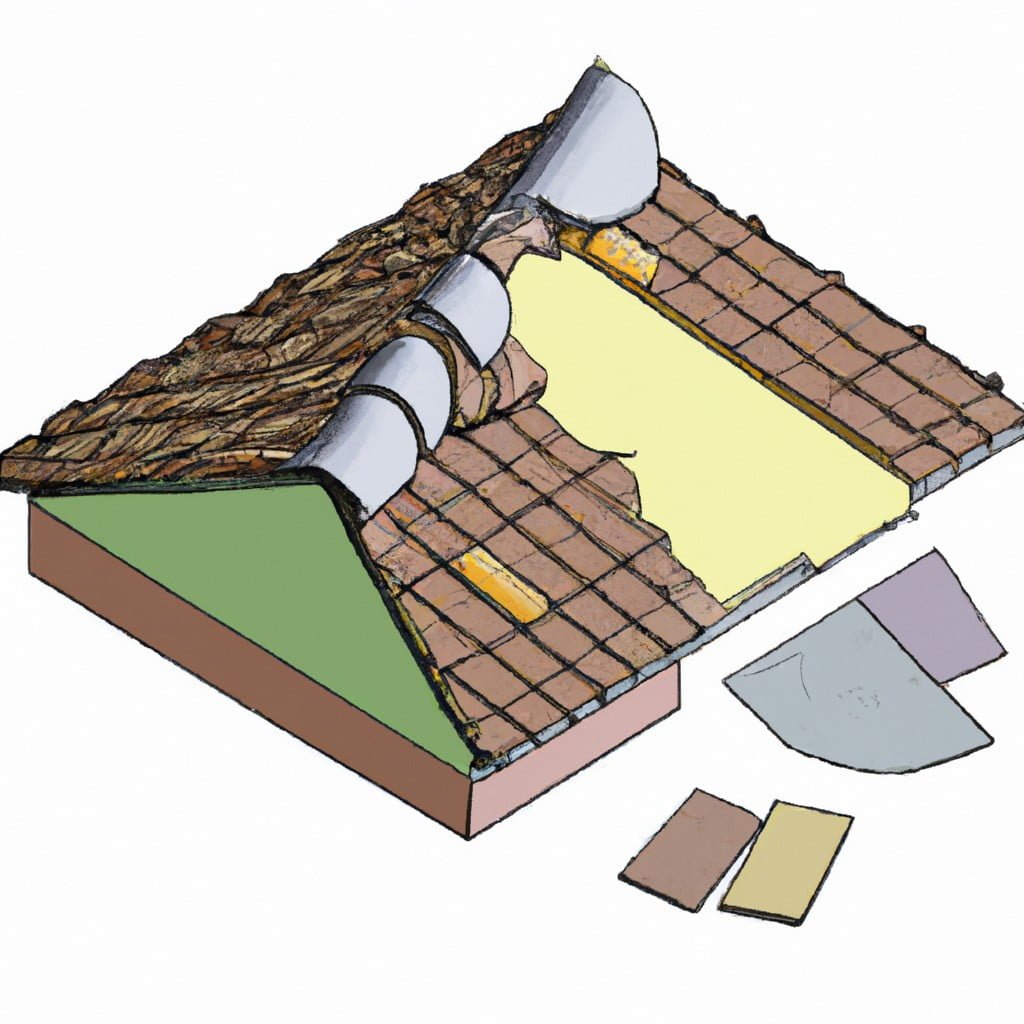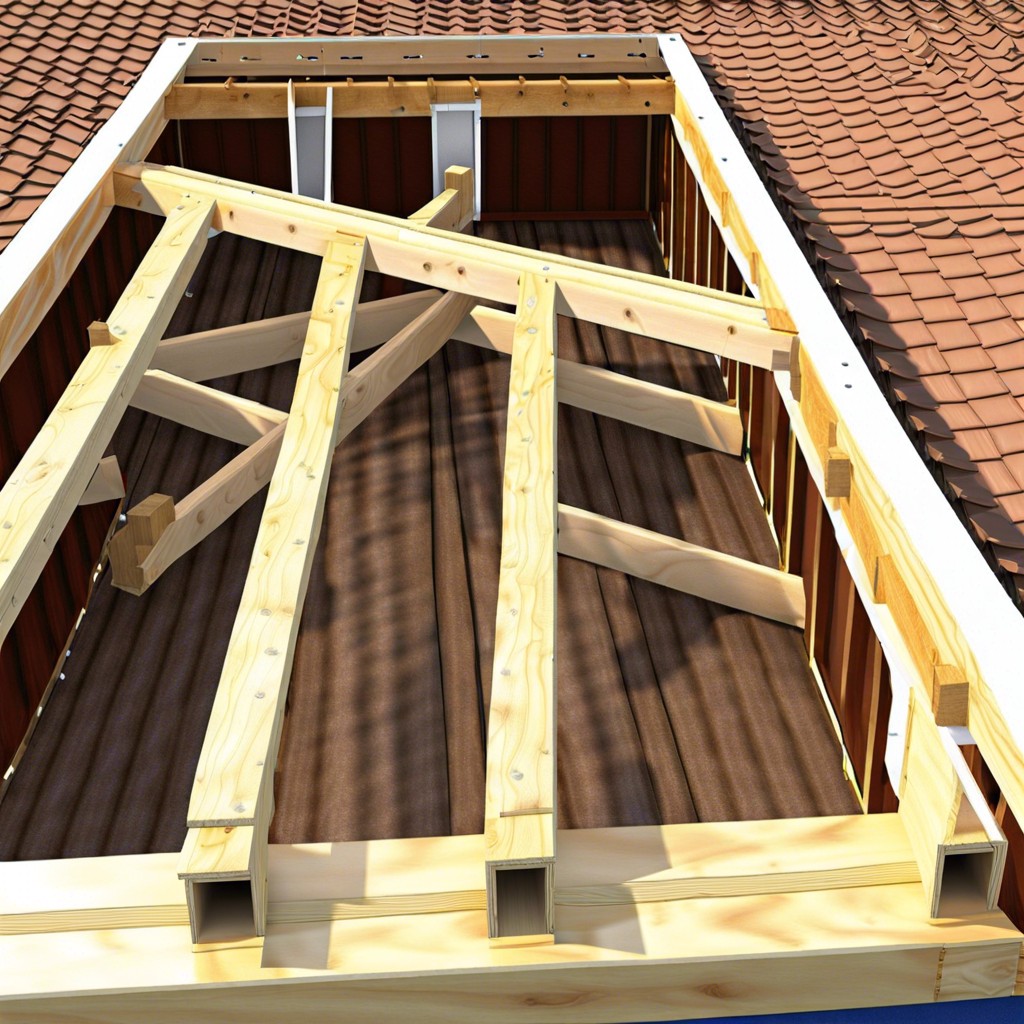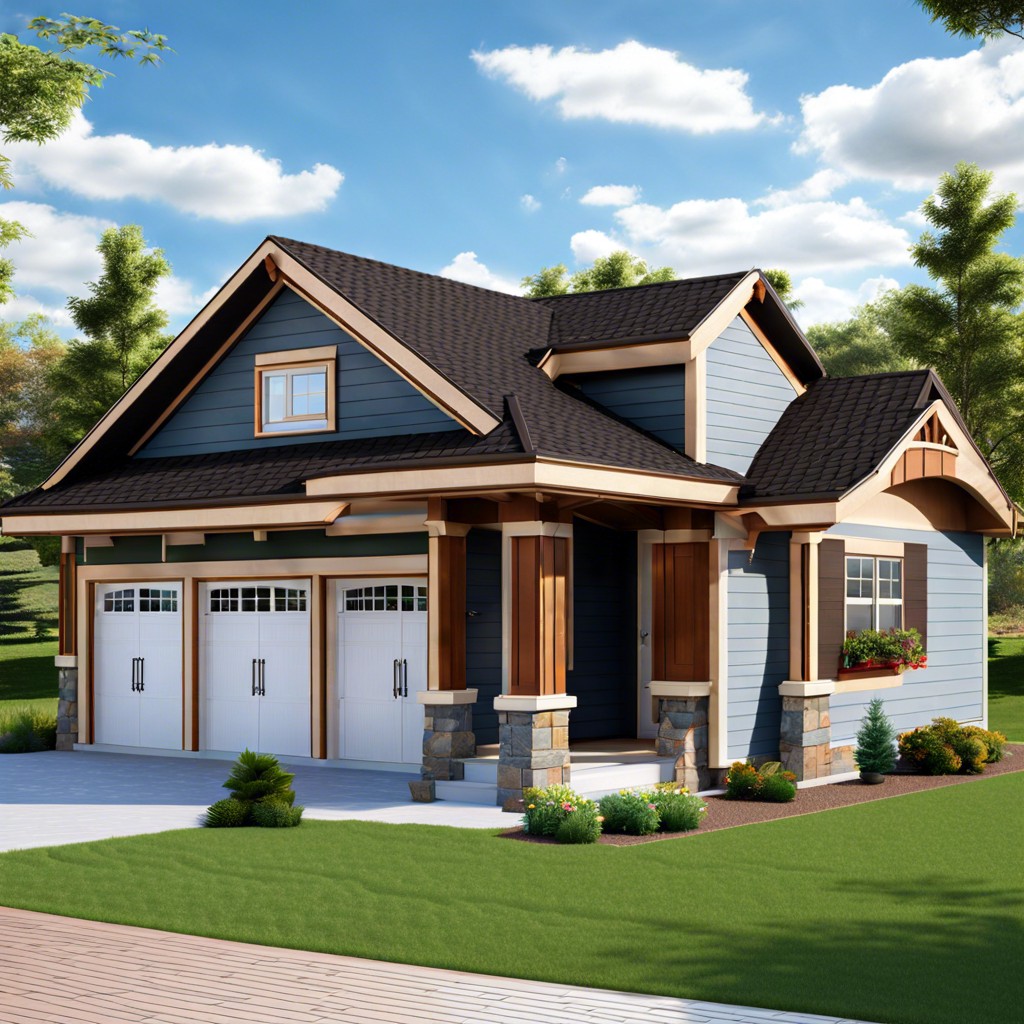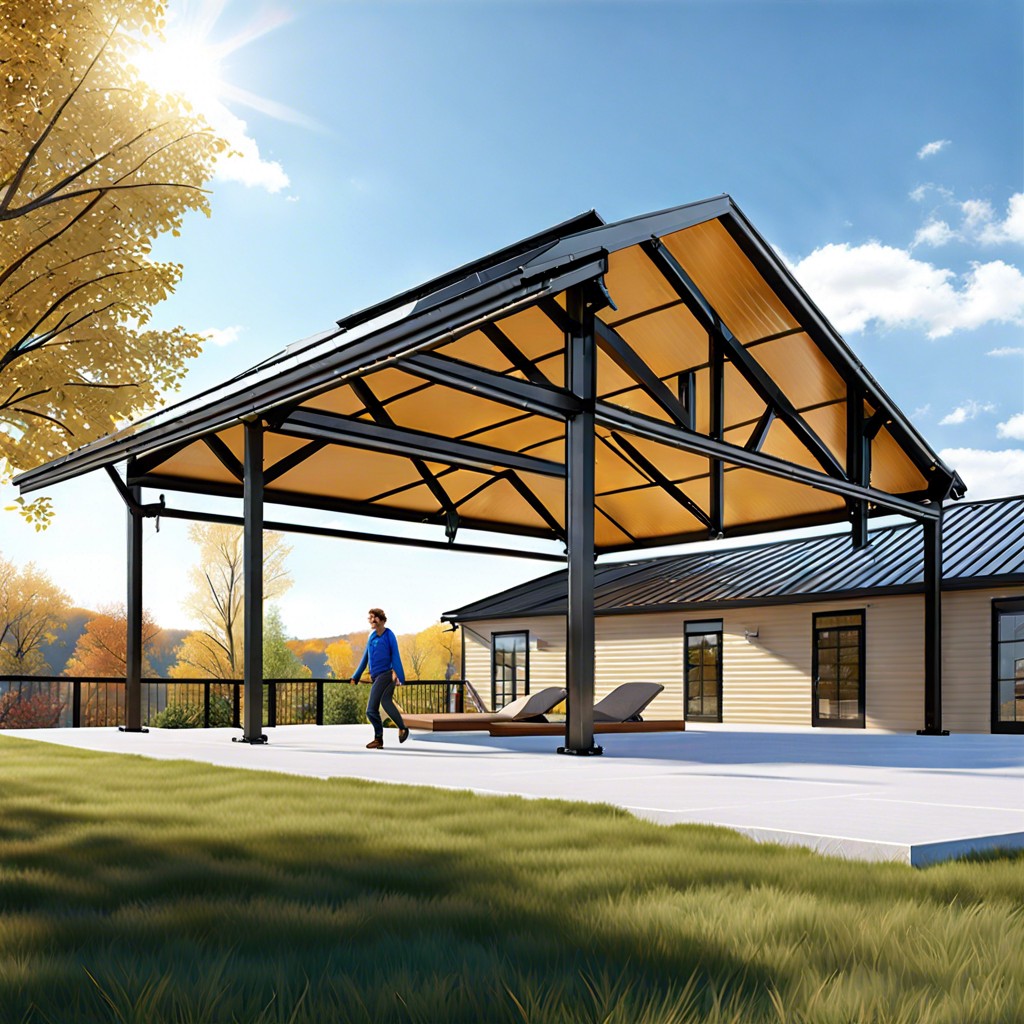Last updated on
Discover the ideal frequency for roof replacement to ensure your home stays well-protected and maintains its structural integrity.
Your roof is one of the most important parts of your home, protecting you and your family from the elements. But how often should you replace it? It’s a question that many homeowners ask themselves, and for good reason.
Replacing a roof can be a significant investment, both in terms of time and money. In this article, we’ll take a closer look at how often you should get your roof replaced to ensure that it continues to provide the protection your home needs.
So grab a cup of coffee and let’s dive in!
Importance of Roof Replacement

Your roof is the first line of defense against harsh weather conditions, and it’s essential to keep it in good condition. Over time, roofs can become damaged due to exposure to the elements or general wear and tear.
This damage can lead to leaks, which can cause significant problems for your home’s structure if left unaddressed.
Replacing your roof when necessary is crucial for maintaining a safe and comfortable living environment. A new roof not only provides better protection from the elements but also enhances curb appeal while increasing property value.
Moreover, an old or damaged roof may compromise energy efficiency by allowing air leaks that increase heating/cooling costs significantly. By replacing an outdated roofing system with modern materials designed for energy efficiency such as metal roofing or cool roofs (reflective surfaces), you’ll save money on utility bills while reducing environmental impact.
Types of Roofing Materials
There are several options available, each with its own advantages and disadvantages. Some popular choices include asphalt shingles, metal roofing, tile roofs and flat roofs.
Asphalt shingles are by far the most common choice for residential homes due to their affordability and ease of installation. They come in a variety of colors and styles that can mimic other materials like wood or slate.
Metal roofing has become increasingly popular in recent years due to its durability and energy efficiency. It’s also fire-resistant which makes it an excellent option for areas prone to wildfires.
Tile roofs offer a unique aesthetic appeal with their distinctive shapes but they tend to be more expensive than other options because they require specialized installation techniques.
Flat roofs have been traditionally used on commercial buildings but have gained popularity among homeowners as well because they provide additional outdoor living space while being cost-effective compared to sloped roof designs.
Lifespan of Different Roofing Materials
Some materials are more durable and long-lasting than others, while some require more maintenance to extend their lifespan. Asphalt shingles, for example, are one of the most popular roofing materials due to their affordability and ease of installation.
They typically last between 15-30 years depending on factors such as weather conditions and proper maintenance.
Metal roofs have a longer lifespan compared to asphalt shingles with an average life expectancy ranging from 40-70 years or even longer if properly maintained. Tile roofs can also last up to 100 years but may require additional structural support due to their weight.
Wooden shakes or shingles have a shorter lifespan compared to other roofing materials because they are susceptible to rotting, warping, and insect damage over time unless treated regularly with preservatives.
It’s important that you consider the expected longevity when selecting your roofing material so that you can plan for future replacements accordingly.
Roof Replacement Frequency
In general, most roofs last between 15 to 25 years before they need to be replaced. However, some materials like metal or slate can last up to 50 years or more.
It’s important not only to consider your roof’s age but also its condition when deciding whether it needs replacing. Signs that your roof may need replacement include missing shingles or tiles; cracked or curling shingles; water damage in your attic; mold growth on walls and ceilings; and visible wear-and-tear.
If you’re unsure about whether it’s time for a new roof, consult with a professional roofing contractor who can assess its condition accurately. They will provide recommendations based on their expertise while keeping in mind any budgetary constraints you may have.
Signs Your Roof Needs Replacement
Here are some signs that indicate your roof may need replacing:
1. Age: If your roof is more than 20 years old, you should consider getting a new one.
2. Missing or damaged shingles: Shingles that are missing, cracked, curled or buckled can allow water to seep into the underlying layers and cause damage.
3. Leaks: Water stains on ceilings and walls could be an indication of a leaky roof.
4. Sagging Roof Decking: A sagging deck indicates structural damage which requires immediate attention from professionals.
5. Granule loss on shingles – This occurs as asphalt granules wear off over time leaving bald spots on shingle surfaces.
6. Moss growth- Moss thrives in damp environments; its presence signifies trapped moisture which can lead to rotting wood underneath.
Factors Affecting Roof Lifespan
For example, asphalt shingles typically last between 15-30 years depending on their quality and maintenance. Metal roofs can last up to 50 years or more with proper care.
Weather is another significant factor that affects a roof’s lifespan. Extreme temperatures such as heatwaves or cold snaps can cause damage to roofing materials over time.
Heavy rainfall or snowfall may also lead to water damage if not adequately addressed.
Proper maintenance is crucial for extending the life of your roof as well. Regular inspections and repairs help identify potential issues before they become major problems that require costly replacements.
Regional Weather Impact On Roofs
For example, if you live in an area with frequent hailstorms or heavy snowfall, it’s essential to choose roofing materials that can withstand these conditions. In areas with high humidity and rainfall, algae growth is common and can cause damage to shingles over time.
In regions prone to hurricanes or tornadoes, it’s crucial to ensure that your roof is properly installed and reinforced against strong winds. Extreme heat from prolonged exposure to sunlight may cause some roofing materials like asphalt shingles or wood shakes/cedar shakes/slates/tiles/metal roofs (depending on the type) to deteriorate faster than usual.
It’s important for homeowners living in different regions across the country not only consider their personal preferences but also take into account regional weather patterns when selecting a new roof material.
Regular Roof Maintenance Tips
Here are some tips for maintaining your roof:
1. Inspect Your Roof Regularly: Check for any signs of damage or wear and tear on a regular basis.
2. Keep Gutters Clean: Clogged gutters can cause water damage and lead to leaks in the roof.
3. Trim Overhanging Branches: Trees that overhang your home can cause damage during storms or high winds.
4. Remove Debris from the Roof: Leaves, branches, and other debris should be removed regularly as they trap moisture which leads to mold growth on roofs.
5. Address Any Issues Promptly: If you notice any issues with your roof such as missing shingles or leaks, address them promptly before they become bigger problems.
Selecting the Right Roofing Contractor
When choosing a contractor, it’s important to do your research and ask for referrals from friends or family members who have had similar work done. Look for contractors with experience in the type of roofing material you want, as well as those who are licensed and insured.
It’s also essential to get multiple quotes from different contractors before making a decision. Don’t just go with the lowest bid; instead, consider factors such as reputation, quality of materials used, warranties offered on their workmanship and products used.
Another thing to keep in mind when selecting a roofing contractor is communication skills. You want someone who will be responsive throughout the process – answering questions promptly and keeping you informed about progress updates.
The Best Time of Year for Roof Replacement
The best time to replace your roof is during dry weather conditions, as rain or snow can make it difficult for contractors to work safely and efficiently. Spring, summer, and early fall are typically considered ideal times for roofing projects in most regions.
However, keep in mind that peak season may also mean higher costs due to increased demand from homeowners seeking repairs or replacements. If you’re looking to save money on your roofing project without sacrificing quality workmanship, consider scheduling it during off-peak months like late fall or winter when contractors may be more willing to negotiate pricing.
Costs of Roof Replacement
The price of replacing your roof can vary depending on several factors such as the size and pitch of your roof, the type of roofing material you choose, and whether or not there are any underlying issues that need to be addressed before installation.
On average, a new asphalt shingle roof can cost anywhere from $5,000 to $10,000 for an average-sized home. However, if you opt for premium materials like metal or slate tiles instead of asphalt shingles then expect costs upwards from $15k-$30k.
It’s important to note that while opting for cheaper materials may seem like a good idea in the short term; they may end up costing more in repairs over time due to their shorter lifespan compared with higher-end options. Additionally hiring an experienced contractor will ensure quality workmanship which could save money down the line by avoiding costly mistakes during installation.
Pros and Cons of Roof Repairs Vs. Replacement
While repairs can be a more cost-effective solution in the short term, there are situations where replacement is necessary. Here are some pros and cons of each option:
- Pros of Roof Repairs:
- Cost-effective: Repairs can often fix minor issues at a lower cost than full replacement.
- Quick turnaround: Depending on the extent of damage, repairs can typically be completed within a few hours or days.
- Cons of Roof Repairs:
- Temporary solution: If your roof is nearing its end-of-life or has significant damage, repairs may only provide temporary relief before further problems arise.
- Limited warranty coverage: Most warranties for roofing materials do not cover repair work.
- Pros of Roof Replacement:
- Long-term solution: A new roof will provide long-lasting protection for your home and eliminate any existing issues.
- Increased home value: A new roof adds curb appeal and increases property value
- Warranty Coverage: New roofs come with manufacturer’s warranties that cover defects
Cons Of Roof Replacement: – Higher upfront costs – Longer installation time.
Ultimately, whether you choose to repair or replace your roof depends on several factors such as age, condition, budget etc.
Roof Replacement and Homeowners Insurance
Most policies will cover roof damage caused by natural disasters such as hail, windstorms, and wildfires. However, coverage for normal wear and tear varies depending on the age of your roof.
It’s also essential to note that filing an insurance claim for a new roof could increase your premiums. Before making any decisions about filing a claim or replacing your roof out-of-pocket, it’s best to consult with an experienced roofing contractor who can assess the extent of any damages.
In addition to reviewing coverage options with their insurer before starting work on their roofs; homeowners should also ensure they hire licensed contractors who carry liability insurance in case anything goes wrong during installation.
Preparing for a Roof Replacement
Before you start, it’s important to take some time to plan and prepare so that you can minimize any disruptions or inconveniences during the project.
Firstly, make sure to clear out any items from your attic or storage space beneath your roof. This will help prevent damage from falling debris during the removal of old shingles and installation of new ones.
Secondly, ensure there is enough space for contractors’ vehicles near your home as they will need access to their equipment throughout the project duration.
Thirdly, consider informing neighbors about upcoming construction work on your property so they can be prepared for potential noise disturbances caused by hammering or other loud noises associated with roofing projects.
Lastly but not least importantly, discuss with your contractor what steps they’ll take in protecting landscaping around the house such as flower beds and shrubs which may be affected by falling debris.
Hiring a Roofing Contractor
A reputable contractor will have the necessary skills and experience to ensure that your new roof is installed correctly and efficiently. But with so many contractors out there, how do you choose the right one?
Firstly, make sure that any potential contractors are licensed and insured in your state. This will protect you from liability if anything goes wrong during the installation process.
Next, ask for references from previous clients or check online reviews of their work. This can give you an idea of their level of professionalism and quality of work.
It’s also important to get multiple quotes from different contractors before making a decision on who to hire. Don’t automatically go for the cheapest option – consider factors such as experience, materials used, warranties offered etc.
Make sure everything is clearly outlined in writing before signing any contracts – including timelines for completion and payment schedules.
DIY Roof Replacement Vs. Professional
While DIY projects can save you money, they can also lead to costly mistakes if not done correctly. Roof replacement is a complex and dangerous task that requires specialized skills and equipment.
Professional roofing contractors have years of experience in handling different types of roofs and are equipped with the necessary tools for the job. They also have access to high-quality materials at wholesale prices, which means they can get better deals than homeowners who buy retail.
On the other hand, DIY roof replacement may seem like an attractive option for those looking to save money on labor costs. However, it’s important to consider all factors before making this decision.
Do you have enough knowledge about roofing? Do you possess all required tools? Are there any safety concerns?
Roof Warranties and Guarantees
A warranty is a written agreement between the manufacturer and the homeowner that outlines what they will do if there are any defects or issues with their product. Guarantees, on the other hand, are agreements made by roofing contractors that guarantee their workmanship for a certain period of time.
It’s important to understand what your warranty covers before you sign on the dotted line. Some warranties only cover materials while others may include labor costs as well.
Some manufacturers offer prorated warranties which means that coverage decreases over time.
Guarantees from roofing contractors can vary in length and coverage as well so be sure to read through them carefully before making any decisions about who you hire for your roof replacement project.
Roof Replacement and Home Value
A new roof not only enhances curb appeal but also provides potential buyers with peace of mind knowing they won’t have to worry about costly repairs in the near future. According to a report by Remodeling Magazine, homeowners can expect to recoup an average 60% return on investment when replacing their roofs.
However, it’s important to note that not all roofing materials are created equal when it comes to adding value. For example, while asphalt shingles are affordable and popular among homeowners, they may not add as much value as more premium options like metal or slate roofing.
Ultimately, if you’re considering selling your home in the near future or simply want to boost its overall worth and appeal, investing in a high-quality roof replacement could be an excellent choice for you.
Energy Efficiency and Roof Replacement
A new roof can help reduce your home’s energy consumption by keeping it cooler in the summer and warmer in the winter. This means that you’ll be able to save money on your heating and cooling bills while also reducing your carbon footprint.
One way to improve the energy efficiency of a new roof is by selecting materials that are designed for this purpose. For example, metal roofs are known for their ability to reflect sunlight, which helps keep homes cool during hot weather.
Asphalt shingles with reflective coatings can also help reduce heat absorption.
Another option is installing insulation under the roofing material itself or adding additional insulation between rafters if necessary. Properly installed insulation will prevent heat from escaping through gaps in walls or ceilings during colder months.
Proper ventilation should not be overlooked as it plays a crucial role in maintaining an efficient roofing system year-round.
Environmentally Friendly Roofing Options
One of the most popular options is a green roof or living roof. This type of roof features vegetation and soil on top of a waterproof membrane, providing insulation and reducing stormwater runoff.
Another environmentally friendly option is metal roofing made from recycled materials such as aluminum or steel. These roofs can last up to 50 years and are fully recyclable at the end of their lifespan.
Solar panels installed on your existing roof can also be an excellent choice for those who want to reduce their carbon footprint while saving money on energy bills.
If you prefer traditional shingles but still want to make an eco-conscious choice, consider using shingles made from recycled materials like rubber or plastic instead of asphalt-based ones that contribute significantly to landfill waste.
When it comes time for your next roofing project, keep these environmentally friendly options in mind so that you can protect both your home and the planet!
FAQ
What is the typical life expectancy of a roof?
The typical life expectancy of a roof ranges from 25 to 50 years, depending on the quality, durability, and material type.
How often do house roofs need to be replaced?
House roofs need to be replaced depending on the material used: asphalt shingle roofs last 20-25 years, wood shingle and shake roofs last 20-30 years, and metal roofs last 40-50 years.
Can a roof last 20 years?
Yes, a roof can last 20 years, but its durability depends on the materials used, quality of workmanship, and climate.
Should I replace my roof after 25 years?
Yes, you should consider replacing your roof after 25 years, as it is recommended to replace a 25-year roof around the 20-year mark, which is 80-85% of the manufacturer’s suggested life of the roof.
How do weather conditions and climate affect the lifespan of a roof?
Various weather conditions and climate factors, such as sun exposure, temperature fluctuations, and severe storms, can impact the lifespan of a roof by causing wear, damage, and deterioration over time.
What are the early warning signs that indicate a roof is reaching the end of its life?
Early warning signs that indicate a roof reaching the end of its life include: curling or cracked shingles, sagging roof areas, moss or algae growth, worn-off roof granules, and frequent leaks.
How should homeowners perform regular maintenance to prolong the lifespan of their roof?
Homeowners should perform regular maintenance by inspecting for damage, clearing debris, and ensuring proper ventilation and insulation to prolong the lifespan of their roof.




